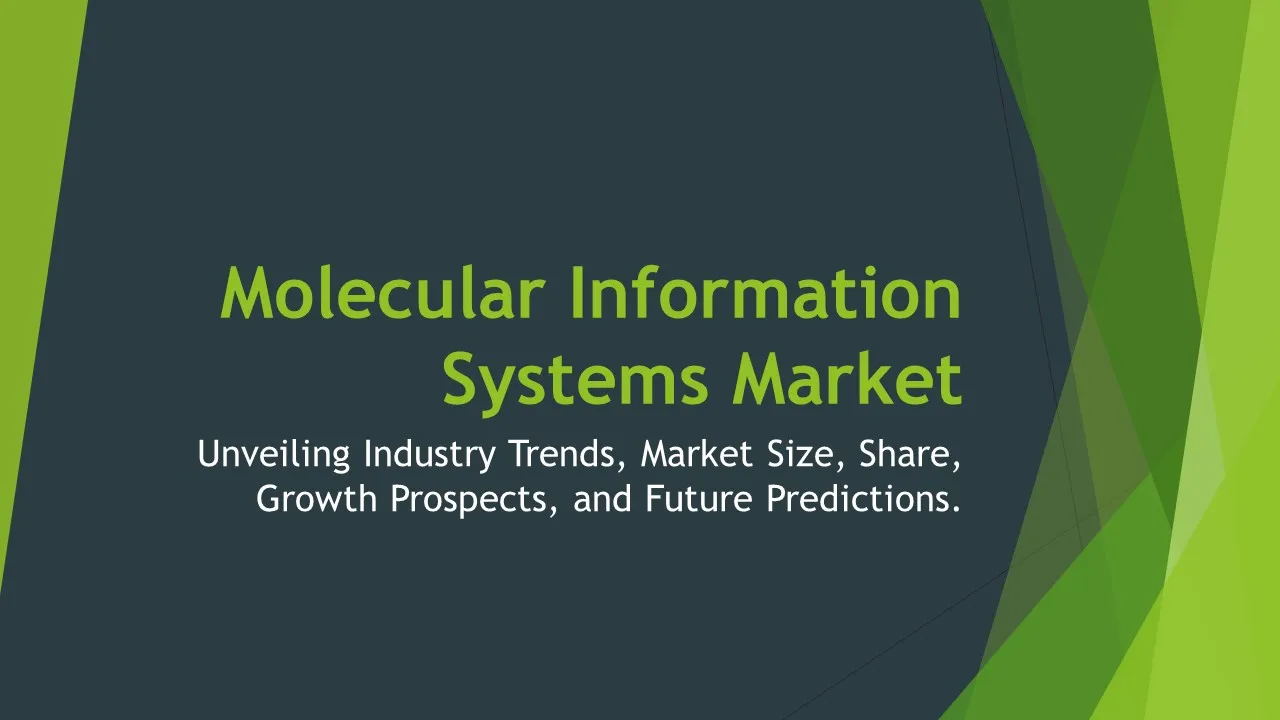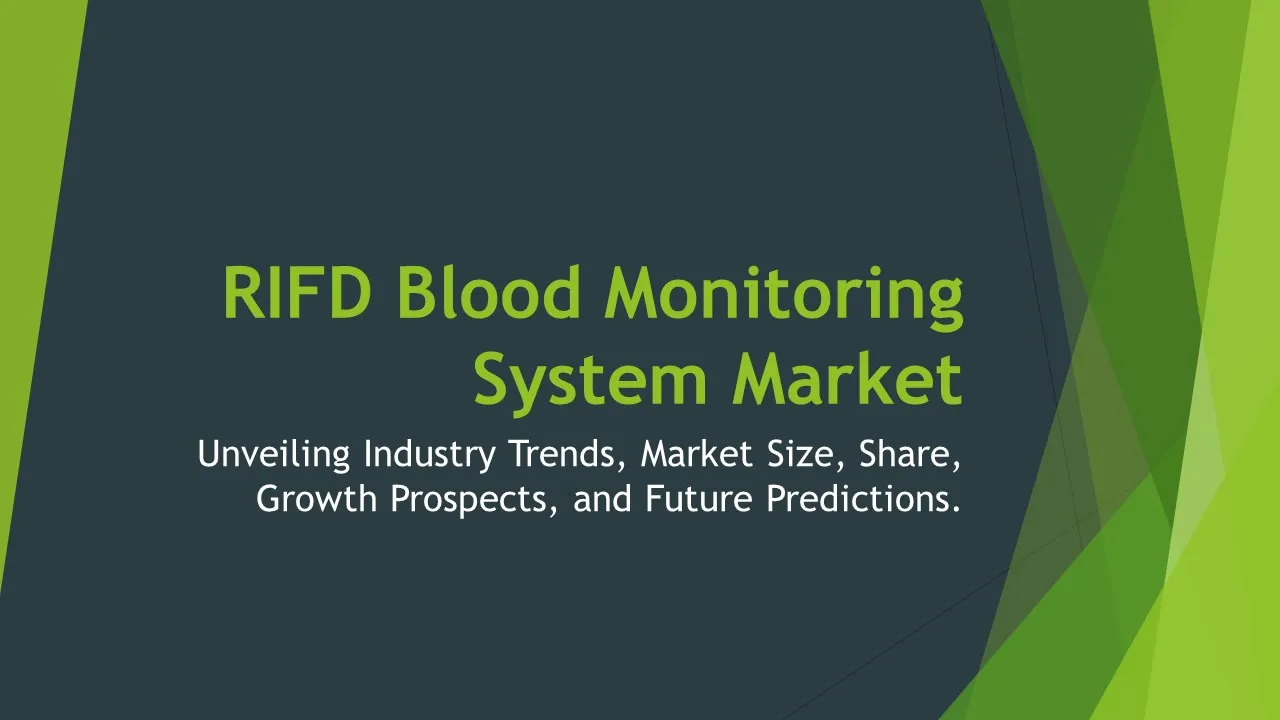Pest Control Software
Pest Control Software Market Segments - by Deployment (Cloud-based, On-premises), Application (Residential, Commercial, Agricultural), End-User (Pest Control Companies, Government, Residential users), Pricing Model (Subscription-based, One-time License), and Region (North America, Europe, Asia Pacific, Latin America, Middle East & Africa) - Global Industry Analysis, Growth, Share, Size, Trends, and Forecast 2025-2035
- Report Preview
- Table Of Content
- Segments
- Methodology
Pest Control Software Market Outlook
The global Pest Control Software Market is projected to reach a valuation of approximately USD 1.5 billion by the year 2035, expanding at a compound annual growth rate (CAGR) of 11.5% during the forecast period from 2025 to 2035. This growth can be attributed to the increasing demand for pest control services amid rising urbanization and population density, alongside growing concerns regarding health and safety. The integration of advanced technologies such as IoT, artificial intelligence, and machine learning into pest control software has significantly enhanced effectiveness and efficiency, propelling market growth. Moreover, the increasing adoption of digital solutions among pest control companies and residential users has further accelerated the market, as software now offers real-time monitoring, reporting, and pest management features that streamline operations and improve customer satisfaction. These factors collectively indicate a robust outlook for the Pest Control Software Market in the coming years.
Growth Factor of the Market
The growth of the Pest Control Software Market is driven by several key factors that are reshaping the way pest control services are delivered and managed. First and foremost, the increasing awareness among consumers regarding the health risks associated with pests has led to a surge in demand for effective pest control solutions. As urban environments evolve and the need for pest management escalates, both residential and commercial sectors are investing in software that allows for meticulous tracking and management of pest control activities. Additionally, as technology continues to advance, pest control companies are increasingly leveraging cloud-based solutions, which facilitate easier access to real-time data, streamline communication, and enhance operational efficiency. Furthermore, the growing trend of remote work has encouraged businesses to adopt digital platforms to manage pest control services more effectively. Lastly, regulatory frameworks emphasizing safety and efficacy in pest control practices act as a catalyst for the adoption of sophisticated pest control software that ensures compliance with industry standards.
Key Highlights of the Market
- The global Pest Control Software Market is expected to witness a significant CAGR of 11.5% from 2025 to 2035.
- Cloud-based deployment models are gaining traction due to their flexibility and scalability.
- The residential application segment is projected to hold the largest market share, driven by increasing demand from household consumers.
- Subscription-based pricing models are becoming more popular, providing customers with ongoing support and updates.
- North America is anticipated to dominate the market, accounting for over 40% of the global share, fueled by advanced technological adoption.
By Deployment
Cloud-based:
Cloud-based pest control software is rapidly becoming the preferred choice for many pest control companies and users because of its inherent advantages, including accessibility and cost-effectiveness. Businesses can access their software from any internet-enabled device, which enhances their operational flexibility. Cloud solutions often come with lower upfront costs, eliminating the need for extensive hardware investments. Additionally, they provide automatic updates, ensuring users always have the latest features and security enhancements without needing to manage the upgrade process. As many pest control professionals work in the field, having access to cloud-based solutions allows for real-time data entry and inventory management, improving service efficiency and customer satisfaction significantly.
On-premises:
On-premises pest control software solutions are still utilized by various companies that prefer having full control over their data and systems. These solutions generally require a higher initial investment for hardware and software installation but can be more appealing for organizations with specific regulatory or compliance requirements regarding data security. On-premises systems can offer improved performance levels, as they do not rely on internet connectivity for functionality, which can be a crucial factor for businesses operating in remote areas. However, this model often necessitates a dedicated IT team to manage the software, apply updates, and address technical issues, making it less attractive for smaller pest control companies without such resources.
By Application
Residential:
The residential application segment of the Pest Control Software Market is experiencing robust growth due to the increasing concern among homeowners about pest infestations and the associated health risks. Many residential users are turning to software solutions that simplify the scheduling of pest control services, track treatments, and manage service history. This software allows for enhanced communication between pest control providers and clients, ensuring transparency and improved customer satisfaction. Additionally, as more homeowners seek sustainable pest management solutions, software that offers integrated approaches, including prevention strategies, is gaining traction. The growing urban population also contributes to the heightened need for these solutions.
Commercial:
Commercial applications of pest control software are essential for businesses that require effective pest management to comply with health and safety regulations. Industries such as hospitality, food service, and healthcare are particularly sensitive to pest issues as they can significantly impact operations and reputations. Pest control software helps commercial entities manage inspections, treatments, and compliance documentation efficiently. Features such as automated reporting and real-time tracking enhance operational efficiency and ensure that pest management practices meet stringent regulatory standards. The increasing scrutiny on businesses regarding public health and cleanliness is expected to drive the demand for effective commercial pest control solutions in the coming years.
Agricultural:
The agricultural sector represents a critical application area for pest control software, as farmers face numerous challenges related to pest infestations that can threaten crop yields and food security. Pest control software tailored for agriculture enables farmers to monitor pest activity, schedule treatments, and manage pesticide application effectively. The integration of remote sensing technologies and data analytics into agricultural pest control software allows for precision pest management, enabling farmers to apply treatments only when necessary, thereby reducing costs and environmental impact. As the focus on sustainable farming practices intensifies, the adoption of advanced pest control software in agriculture is expected to rise significantly.
By User
Pest Control Companies:
Pest control companies form the primary user base for pest control software, leveraging these tools to enhance service delivery and operational efficiency. These companies utilize software for scheduling services, managing customer accounts, tracking employee performance, and maintaining treatment records. The automation of various administrative tasks allows pest control firms to focus more on customer service and satisfaction. Furthermore, software solutions equipped with analytics capabilities provide businesses with valuable insights into operation patterns, helping them optimize resource allocation and improve their marketing strategies. As competition in the pest control industry increases, adopting innovative software solutions becomes essential for companies aiming to gain a competitive edge.
Government:
Government agencies require effective pest management solutions to ensure public health and safety. Pest control software assists government entities in managing pest control initiatives, conducting inspections, and monitoring compliance with health and safety regulations. These tools also facilitate data collection and reporting, enabling authorities to analyze pest trends and implement effective strategies for pest management in public spaces. The demand for integrated solutions that can handle large volumes of data and facilitate collaboration among various departments is driving the adoption of pest control software by government agencies. As public health concerns continue to rise, the role of effective pest management in government operations is becoming increasingly important.
Residential Users:
Residential users represent a growing segment in the pest control software market, as homeowners increasingly seek effective solutions for managing pest infestations. Software tailored for residential users simplifies the process of scheduling treatments, tracking pest activity, and receiving recommendations for preventive measures. The convenience offered by these tools, including mobile applications that allow for easy access to pest control services, is a significant draw for homeowners. Moreover, many software solutions offer educational resources about pest management, empowering homeowners to take proactive measures against potential infestations. As awareness of pest-related health risks increases among residential users, the demand for user-friendly pest control software is expected to rise.
By Pricing Model
Subscription-based:
The subscription-based pricing model is becoming increasingly popular in the Pest Control Software Market, as it offers a flexible and cost-effective solution for businesses and consumers alike. This model typically includes ongoing updates, customer support, and access to new features without the need for large upfront investments. For pest control companies, subscription plans can help maintain cash flow while ensuring they have the latest technology at their fingertips. Additionally, the subscription model often allows users to scale their services as their needs change, making it an attractive option for both small and large enterprises. As the market continues to evolve, more companies are likely to adopt subscription models to facilitate easier access to advanced pest control software.
One-time License:
Conversely, the one-time license model appeals to customers who prefer a straightforward purchasing structure without ongoing fees. This model often involves a significant upfront cost for the software, but it provides users with full control over their purchased product without the need for recurring payments. Companies with stable operations and limited need for frequent updates may find this model appealing, as it allows them to allocate their budget more predictably. However, users must consider the responsibility of managing their software updates and technical support, which can lead to additional costs over time. The one-time license model remains prevalent, particularly among established pest control firms that have the technical expertise to manage the software independently.
By Region
The North American region is anticipated to dominate the Pest Control Software Market, accounting for over 40% of the global share by 2035. The robust growth in this region can be attributed to the increasing adoption of advanced technology solutions among pest control companies driven by the need for operational efficiency, compliance, and customer satisfaction. The presence of numerous established pest control companies, coupled with the growing concern over health and safety issues related to pest infestations, further fuels the demand for effective software solutions. Moreover, North America is witnessing a steady increase in residential and commercial pest control activities, leading to greater investments in software to streamline operations and enhance service delivery.
In Europe, the Pest Control Software Market is expected to grow at a CAGR of approximately 10% during the forecast period, reflecting the increasing awareness of pest-related health risks and the need for effective pest management solutions. The European market is characterized by a growing demand for integrated pest management strategies that align with sustainability goals. As regulatory frameworks become more stringent regarding pesticide usage and pest control practices, companies are turning to software solutions that facilitate compliance with these regulations. The emphasis on eco-friendly practices and the rising trend of digital transformation across various sectors are likely to propel the adoption of pest control software in Europe as well.
Opportunities
The Pest Control Software Market is poised to experience significant opportunities driven by the growing emphasis on technology integration in pest management practices. As pest control companies seek to enhance their service offerings, software solutions that incorporate advanced technologies such as Artificial Intelligence (AI) and machine learning are emerging as key differentiators. These technologies enable better prediction and analysis of pest behavior, allowing professionals to implement proactive measures and reduce the reliance on chemical treatments. Additionally, the rising trend of smart homes and IoT devices presents a unique opportunity for pest control software providers to develop solutions that integrate seamlessly with home automation systems, thereby improving operational efficiency and customer convenience. The convergence of technology and environmental sustainability creates an ideal environment for innovation within the pest control software space.
Furthermore, the global push towards digital transformation across industries presents an opportunity for pest control software providers to tap into new markets and customer segments. Increased awareness among residential users about the importance of pest management, combined with the convenience of mobile applications, is likely to drive the demand for user-friendly software solutions. As more people turn to technology for everyday problem-solving, pest control software providers can capitalize on this trend by offering solutions that cater to the needs of residential users. Moreover, expanding into emerging markets presents additional growth opportunities, as economies in regions such as Asia Pacific and Latin America continue to develop and urbanize, leading to increased demand for effective pest management solutions.
Threats
The Pest Control Software Market faces several threats that could impede growth and adoption rates. One of the primary concerns is the security of customer data and the potential for cyber threats. As pest control companies increasingly adopt cloud-based solutions, they become vulnerable to data breaches and cyberattacks that can compromise sensitive customer information. This risk may deter some companies from fully embracing technological solutions, particularly smaller firms that may lack the resources to implement robust security measures. Additionally, the rapid pace of technological advancement poses a challenge, as companies must continuously invest in updates and innovations to stay competitive. Failure to keep pace with industry trends can result in obsolescence, negatively impacting market positions.
Another significant threat to the Pest Control Software Market is the emergence of DIY pest control solutions that are gaining popularity among residential users. Many individuals are opting for self-service pest management methods, driven by cost considerations and the availability of information online. This trend can reduce the demand for professional pest control services and, by extension, the software solutions that support those services. Furthermore, fluctuations in regulations governing pest control practices can create uncertainty within the market. Regulatory changes may impose additional compliance requirements for pest control companies, necessitating updates to their software solutions. Such changes can place a strain on resources and may lead to decreased market confidence.
Competitor Outlook
- Rentokil Initial plc
- Terminix Global Holdings, Inc.
- Rollins, Inc.
- Ecolab Inc.
- Anticimex
- Fumigation Services
- PestRoutes
- Praziquantel Pest Control Software
- BugOut
- Pest Control Software, LLC
- MyPestControl
- Syngenta
- Dow AgroSciences
- FMG Software
- EcoSMART Technologies
The competitive landscape of the Pest Control Software Market is characterized by the presence of both established players and emerging startups, all striving to innovate and capture market share. Major companies are investing heavily in research and development to enhance their software capabilities and offer integrated solutions that address the evolving needs of pest control professionals. Strategic partnerships and collaborations between technology providers and pest control firms are becoming increasingly common, as companies seek to leverage complementary strengths to better serve their clients. Additionally, mergers and acquisitions are prevalent in this sector as companies look to expand their technological offerings and enhance their market presence. This dynamic environment necessitates that businesses remain adaptable to changing market conditions and consumer demands to maintain a competitive edge.
Rentokil Initial plc is a leading player in the pest control industry, known for its extensive global presence and wide range of pest management solutions. The company has invested significantly in technology and innovation, enhancing its pest control software capabilities with real-time tracking and reporting functionalities. Alongside its comprehensive service offerings, Rentokil's commitment to sustainability drives the development of environmentally friendly pest management solutions. Similarly, Terminix Global Holdings, Inc. has established itself as a prominent provider of pest control services, leveraging technology to optimize service delivery and improve customer experiences. The company's software solutions include features designed to facilitate smoother communication between customers and service providers, enhancing overall service quality.
Rollins, Inc., through its subsidiary brands, provides diverse pest control solutions tailored to various markets. Its focus on customer service excellence and technological integration has positioned Rollins as a strong competitor in the industry. The company actively seeks to adopt new technologies to improve its operational efficiency while maintaining a strong commitment to customer satisfaction. Ecolab Inc. also plays a significant role in the pest control software market, offering solutions that cover a wide range of pest management needs, particularly in commercial settings. Ecolab's emphasis on integrated pest management and sustainable practices makes it a trusted partner for businesses looking to maintain compliance with health and safety regulations while effectively managing pests.
1 Appendix
- 1.1 List of Tables
- 1.2 List of Figures
2 Introduction
- 2.1 Market Definition
- 2.2 Scope of the Report
- 2.3 Study Assumptions
- 2.4 Base Currency & Forecast Periods
3 Market Dynamics
- 3.1 Market Growth Factors
- 3.2 Economic & Global Events
- 3.3 Innovation Trends
- 3.4 Supply Chain Analysis
4 Consumer Behavior
- 4.1 Market Trends
- 4.2 Pricing Analysis
- 4.3 Buyer Insights
5 Key Player Profiles
- 5.1 BugOut
- 5.1.1 Business Overview
- 5.1.2 Products & Services
- 5.1.3 Financials
- 5.1.4 Recent Developments
- 5.1.5 SWOT Analysis
- 5.2 Syngenta
- 5.2.1 Business Overview
- 5.2.2 Products & Services
- 5.2.3 Financials
- 5.2.4 Recent Developments
- 5.2.5 SWOT Analysis
- 5.3 Anticimex
- 5.3.1 Business Overview
- 5.3.2 Products & Services
- 5.3.3 Financials
- 5.3.4 Recent Developments
- 5.3.5 SWOT Analysis
- 5.4 PestRoutes
- 5.4.1 Business Overview
- 5.4.2 Products & Services
- 5.4.3 Financials
- 5.4.4 Recent Developments
- 5.4.5 SWOT Analysis
- 5.5 Ecolab Inc.
- 5.5.1 Business Overview
- 5.5.2 Products & Services
- 5.5.3 Financials
- 5.5.4 Recent Developments
- 5.5.5 SWOT Analysis
- 5.6 FMG Software
- 5.6.1 Business Overview
- 5.6.2 Products & Services
- 5.6.3 Financials
- 5.6.4 Recent Developments
- 5.6.5 SWOT Analysis
- 5.7 MyPestControl
- 5.7.1 Business Overview
- 5.7.2 Products & Services
- 5.7.3 Financials
- 5.7.4 Recent Developments
- 5.7.5 SWOT Analysis
- 5.8 Rollins, Inc.
- 5.8.1 Business Overview
- 5.8.2 Products & Services
- 5.8.3 Financials
- 5.8.4 Recent Developments
- 5.8.5 SWOT Analysis
- 5.9 Dow AgroSciences
- 5.9.1 Business Overview
- 5.9.2 Products & Services
- 5.9.3 Financials
- 5.9.4 Recent Developments
- 5.9.5 SWOT Analysis
- 5.10 Fumigation Services
- 5.10.1 Business Overview
- 5.10.2 Products & Services
- 5.10.3 Financials
- 5.10.4 Recent Developments
- 5.10.5 SWOT Analysis
- 5.11 Rentokil Initial plc
- 5.11.1 Business Overview
- 5.11.2 Products & Services
- 5.11.3 Financials
- 5.11.4 Recent Developments
- 5.11.5 SWOT Analysis
- 5.12 EcoSMART Technologies
- 5.12.1 Business Overview
- 5.12.2 Products & Services
- 5.12.3 Financials
- 5.12.4 Recent Developments
- 5.12.5 SWOT Analysis
- 5.13 Pest Control Software, LLC
- 5.13.1 Business Overview
- 5.13.2 Products & Services
- 5.13.3 Financials
- 5.13.4 Recent Developments
- 5.13.5 SWOT Analysis
- 5.14 Terminix Global Holdings, Inc.
- 5.14.1 Business Overview
- 5.14.2 Products & Services
- 5.14.3 Financials
- 5.14.4 Recent Developments
- 5.14.5 SWOT Analysis
- 5.15 Praziquantel Pest Control Software
- 5.15.1 Business Overview
- 5.15.2 Products & Services
- 5.15.3 Financials
- 5.15.4 Recent Developments
- 5.15.5 SWOT Analysis
- 5.1 BugOut
6 Market Segmentation
- 6.1 Pest Control Software Market, By User
- 6.1.1 Pest Control Companies
- 6.1.2 Government
- 6.1.3 Residential users
- 6.2 Pest Control Software Market, By Deployment
- 6.2.1 Cloud-based
- 6.2.2 On-premises
- 6.3 Pest Control Software Market, By Application
- 6.3.1 Residential
- 6.3.2 Commercial
- 6.3.3 Agricultural
- 6.4 Pest Control Software Market, By Pricing Model
- 6.4.1 Subscription-based
- 6.4.2 One-time License
- 6.1 Pest Control Software Market, By User
7 Competitive Analysis
- 7.1 Key Player Comparison
- 7.2 Market Share Analysis
- 7.3 Investment Trends
- 7.4 SWOT Analysis
8 Research Methodology
- 8.1 Analysis Design
- 8.2 Research Phases
- 8.3 Study Timeline
9 Future Market Outlook
- 9.1 Growth Forecast
- 9.2 Market Evolution
10 Geographical Overview
- 10.1 Europe - Market Analysis
- 10.1.1 By Country
- 10.1.1.1 UK
- 10.1.1.2 France
- 10.1.1.3 Germany
- 10.1.1.4 Spain
- 10.1.1.5 Italy
- 10.1.1 By Country
- 10.2 Asia Pacific - Market Analysis
- 10.2.1 By Country
- 10.2.1.1 India
- 10.2.1.2 China
- 10.2.1.3 Japan
- 10.2.1.4 South Korea
- 10.2.1 By Country
- 10.3 Latin America - Market Analysis
- 10.3.1 By Country
- 10.3.1.1 Brazil
- 10.3.1.2 Argentina
- 10.3.1.3 Mexico
- 10.3.1 By Country
- 10.4 North America - Market Analysis
- 10.4.1 By Country
- 10.4.1.1 USA
- 10.4.1.2 Canada
- 10.4.1 By Country
- 10.5 Middle East & Africa - Market Analysis
- 10.5.1 By Country
- 10.5.1.1 Middle East
- 10.5.1.2 Africa
- 10.5.1 By Country
- 10.6 Pest Control Software Market by Region
- 10.1 Europe - Market Analysis
11 Global Economic Factors
- 11.1 Inflation Impact
- 11.2 Trade Policies
12 Technology & Innovation
- 12.1 Emerging Technologies
- 12.2 AI & Digital Trends
- 12.3 Patent Research
13 Investment & Market Growth
- 13.1 Funding Trends
- 13.2 Future Market Projections
14 Market Overview & Key Insights
- 14.1 Executive Summary
- 14.2 Key Trends
- 14.3 Market Challenges
- 14.4 Regulatory Landscape
Segments Analyzed in the Report
The global Pest Control Software market is categorized based on
By Deployment
- Cloud-based
- On-premises
By Application
- Residential
- Commercial
- Agricultural
By User
- Pest Control Companies
- Government
- Residential users
By Pricing Model
- Subscription-based
- One-time License
By Region
- North America
- Europe
- Asia Pacific
- Latin America
- Middle East & Africa
Key Players
- Rentokil Initial plc
- Terminix Global Holdings, Inc.
- Rollins, Inc.
- Ecolab Inc.
- Anticimex
- Fumigation Services
- PestRoutes
- Praziquantel Pest Control Software
- BugOut
- Pest Control Software, LLC
- MyPestControl
- Syngenta
- Dow AgroSciences
- FMG Software
- EcoSMART Technologies
- Publish Date : Jan 21 ,2025
- Report ID : IT-69442
- No. Of Pages : 100
- Format : |
- Ratings : 4.5 (110 Reviews)









